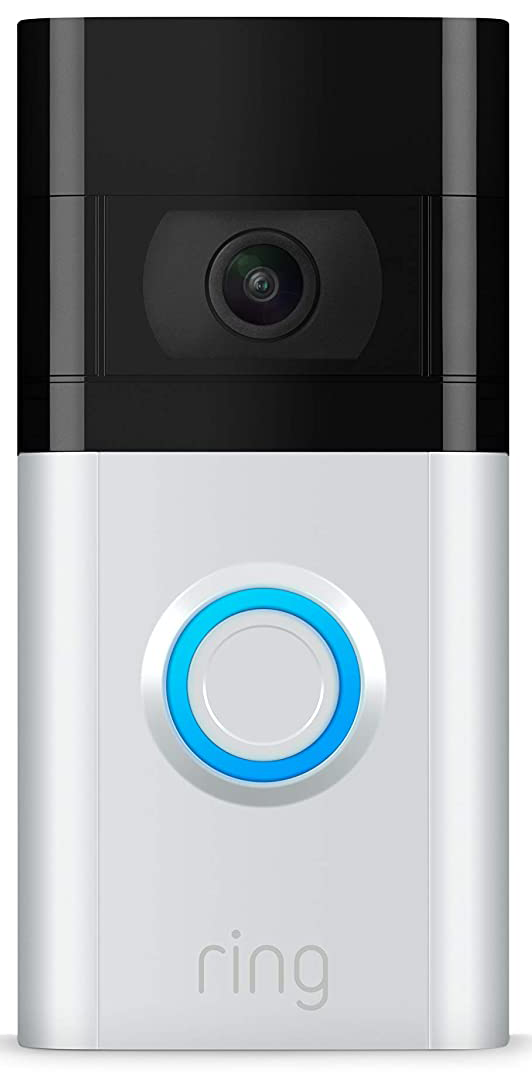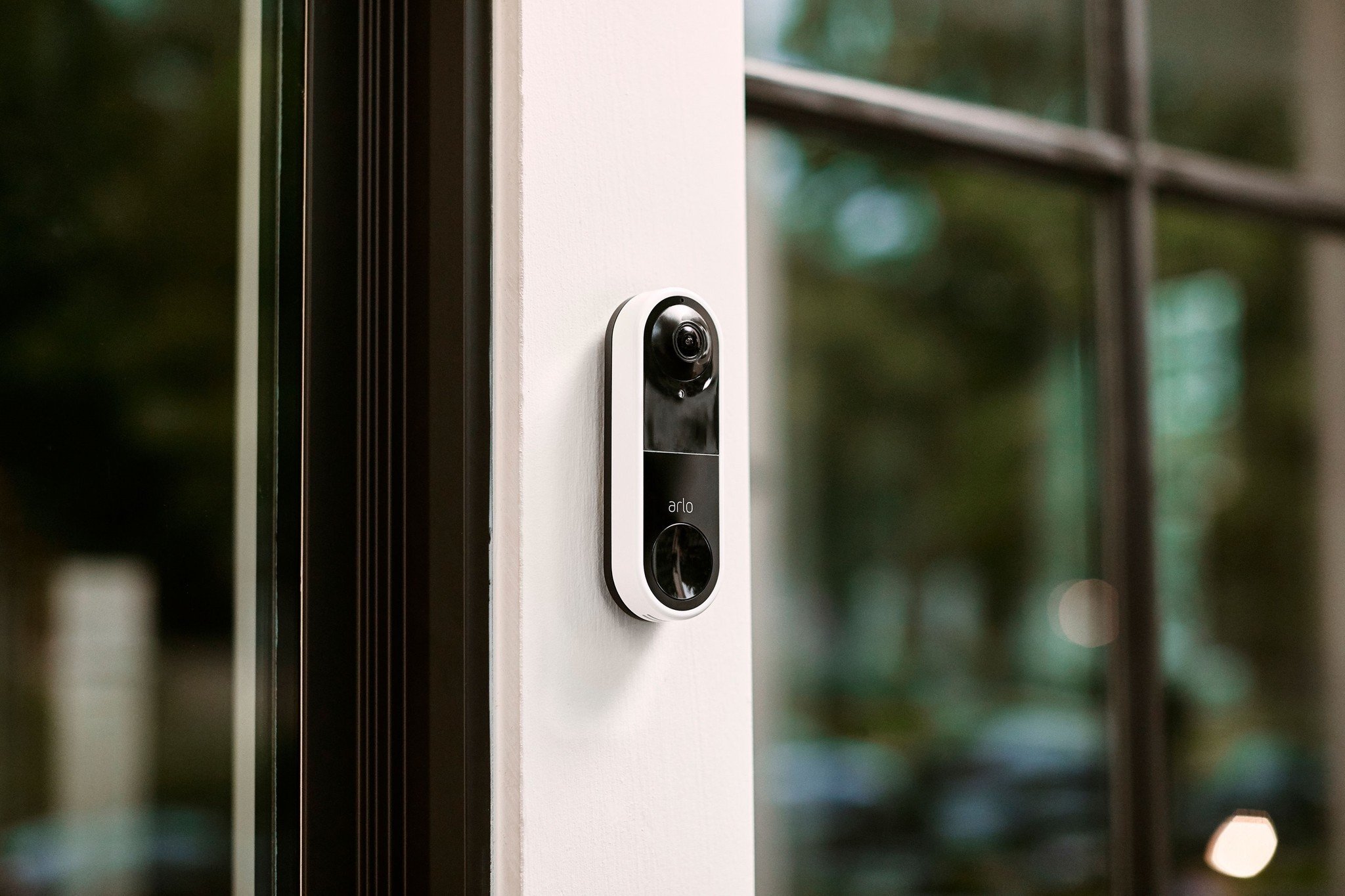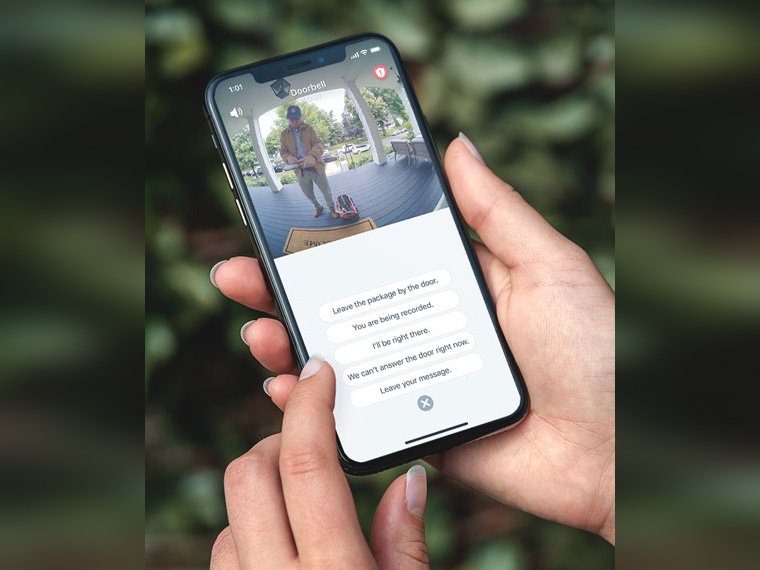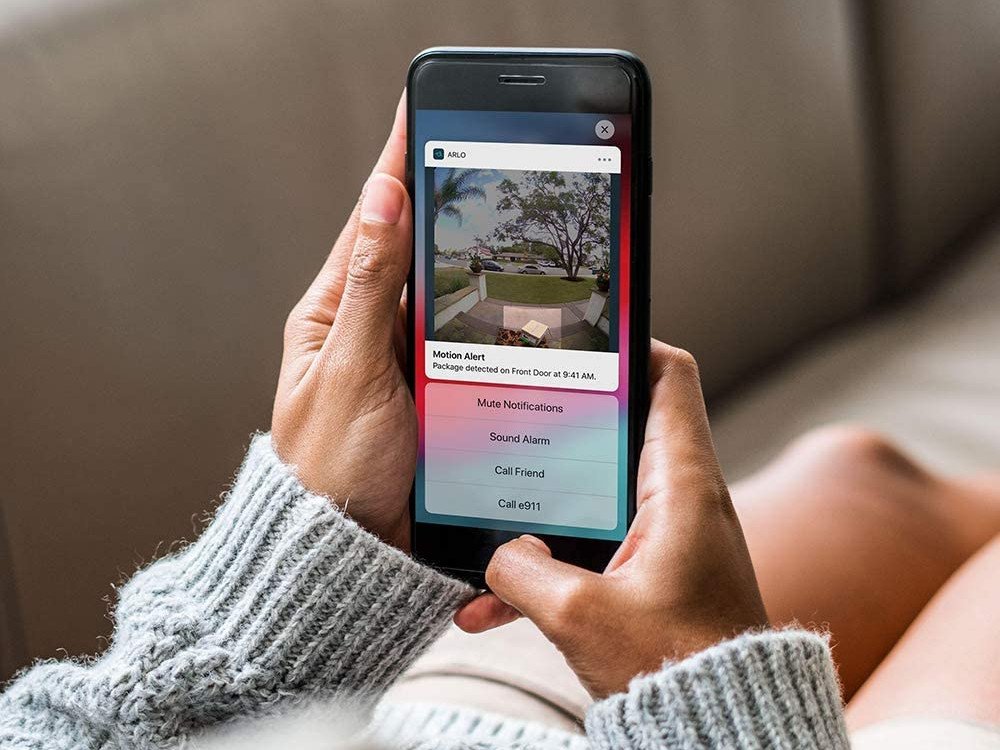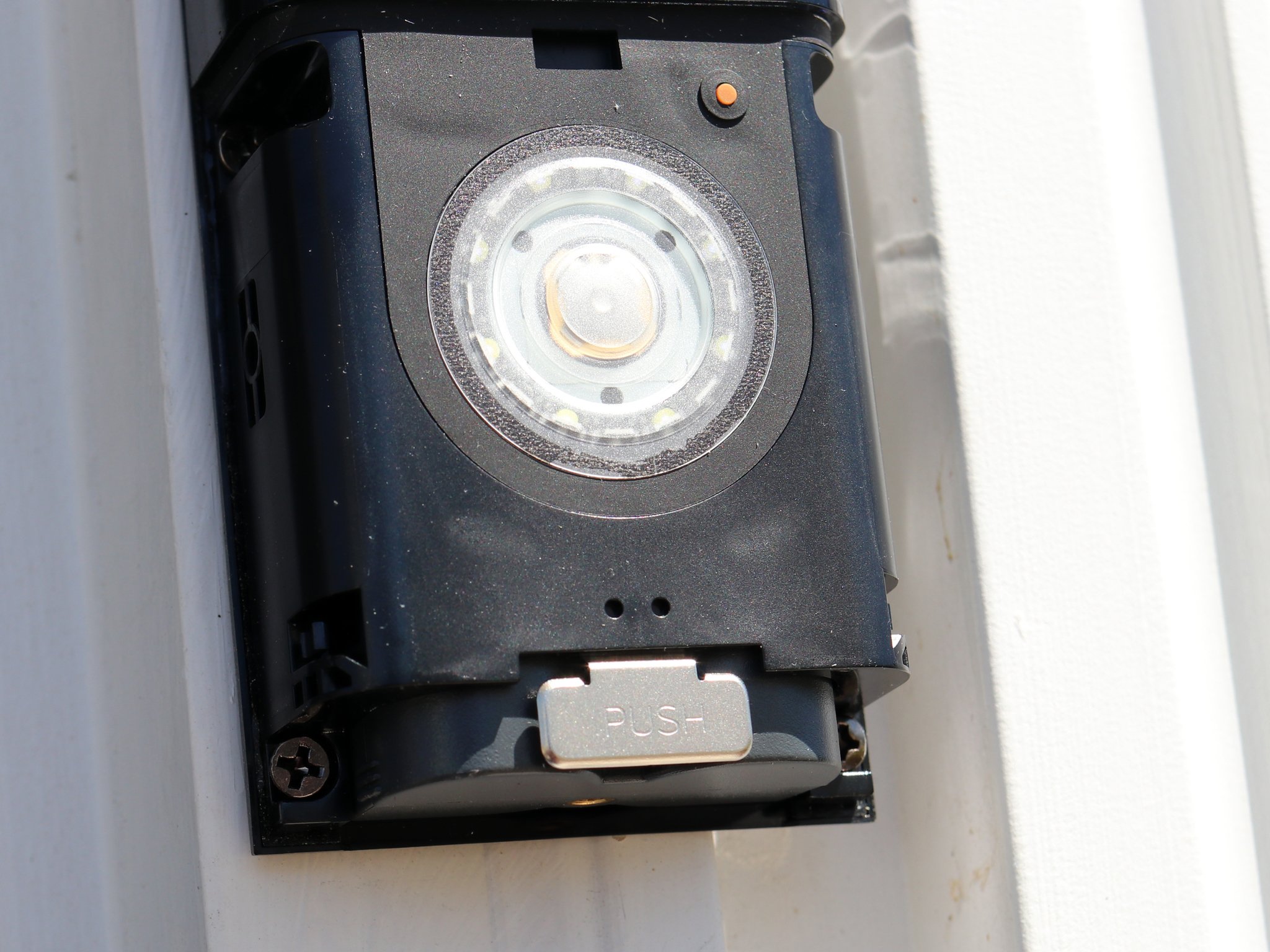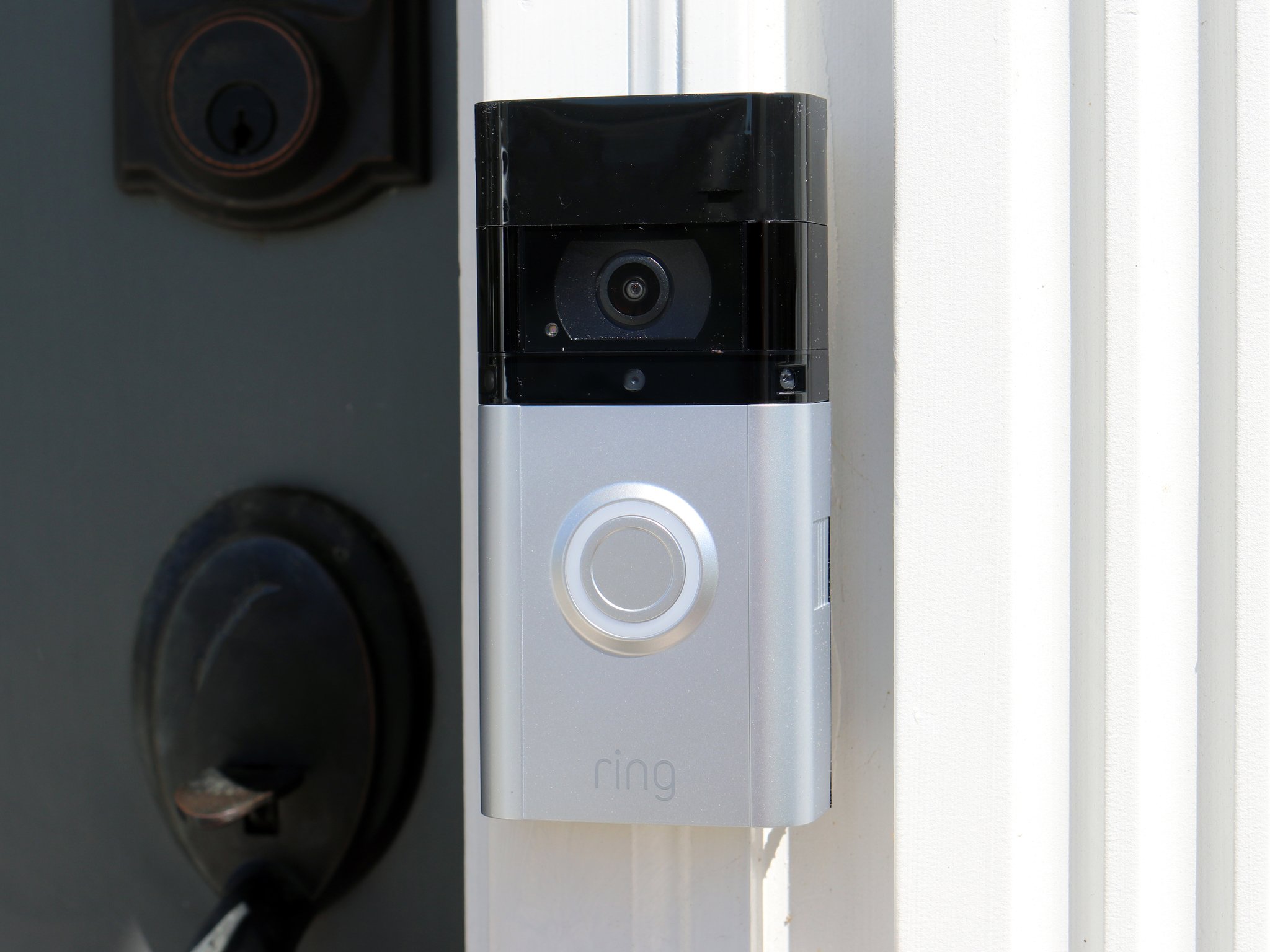Ring Video Doorbell 3 vs. Arlo Video Doorbell: Which should you buy?
$150 at Amazon$150 at Best Buy
Pros- HDR video with wider aspect ratio
- Digital zoom
- AI-based object detection
- Pre-recorded responses for answering the doorbell
- Built-in siren for scaring off intruders
- Requires hardwiring
- Needs subscription to unlock all features
- No 5GHz Wi-Fi support
The Arlo Video Doorbell features some of the most advanced object detection on the market, so it can tell you if it saw an actual person versus just a cat or a car. It also has some amazing security and convenience features, like the ability to respond to the door using one-touch pre-recorded messages or to sound a siren if someone shouldn't be there.
When wireless is the only wayRing Video Doorbell 3$200 at Amazon$200 at Best Buy
Pros- Option to go battery-powered
- Privacy Zones
- 5GHz Wi-Fi support
- Motion detection isn't as precise
- Pricier up-front
Ring continues to offer one of the most advanced wireless video doorbells on the market with the Ring Video Doorbell 3. It's a great way to get all the features you want from a video doorbell without having to mess with wires and electricity.
Ring just released its third-generation video doorbell, the aptly named Ring Video Doorbell 3. As the company that popularized the first major video doorbell on the market, Ring has a lot of expectations to live up to thanks to its legacy of producing solid products. The Ring Video Doorbell 3 improves over previous generations by providing a brand new "Near Zone" that only detects movement between 5-15 feet to help avoid erroneous detections. It also includes new adjustable motion detection areas, privacy zones, and support for 5GHz networks.
While Ring is an established player in the video doorbell market, Arlo isn't just some unknown name in the home security sector. It may have taken Arlo several years to put together a proper video doorbell product, but the outcome of that time is that Arlo has learned from the mistakes of other companies and added its own useful tricks to the mix.
The Arlo Video Doobell delivers more features for less money, but it does so only when users pay monthly for the Arlo Smart subscription. There's also no option to make the Arlo Video Doorbell wireless, while the Ring Video Doorbell 3 can be either a wireless or a hard-wired product. Looking at the specs alone will show that these doorbells have plenty in common, but Arlo edges Ring out in several different areas making it a product that probably makes sense for more homeowners than the Ring Video Doorbell 3.
It's in the eye of the beholderOne of the major differences between these two devices revolves around how they see and interpret the world around them. The Ring Video Doorbell 3 relies on a combination of traditional motion sensing techniques and a unique heat detection method. When the camera sees motion and detects enough heat to register as a living being, it generates a motion alert and tells users that something has been detected. This gives Ring a great way to sense motion from something alive, helping to avoid erroneous movement detection from things like plants or cars driving by.
| Arlo Video Doorbell | Ring Video Doorbell 3 | |
|---|---|---|
| Price | $150 | $200 |
| Power Source | Hardwire | Removable rechargeable battery, or hardwire |
| Video resolution | 1536 x 1536 | 1080p |
| Aspect ratio | 1:1 | 16:9 |
| Field of view | 180 degrees | 160 degrees |
| Dimensions | 5.0 in. x 1.7 in. x 1.0 in. | 5.1 in. x 2.4 in. x 1.1 in. |
| HDR Video | Yes | No |
| Digital Zoom | Yes | No |
| Night Vision | Yes | Yes |
| Live view | Yes | Yes |
| Two-way audio | Yes | Yes |
| Pre-recorded responses | Yes | No |
| Built-in siren | Yes | No |
| Connectivity | 2.4GHz Wi-Fi | 2.4GHz and 5GHz Wi-Fi |
| Motion detection | Adjustable motion zones, Advanced object detection | Adjustable motion zones |
| Privacy Zones | No | Yes |
| Smart Assistant Integration | Amazon Alexa | Amazon Alexa |
Arlo, on the other hand, utilizes an AI-based algorithm that can intelligently identify different types of objects, including being able to differentiate between animals and humans. That ability is a key factor in eliminating erroneous motion alerts and giving you the certainty that, when motion is detected, it's almost always going to be because a human was spotted by the camera. That gives Arlo the upper-hand in actual motion detection, but it could make some folks uneasy about what their video doorbell sees and where that information comes from.
On some occasions, your video doorbell might detect motion but it's not right in front of the camera. The Ring Video Doorbell 3 features what Ring calls the "Near Zone" to help prevent these kinds of detections. This Near Zone is designed to only detect movement between five and fifteen feet away from the camera. That prevents erroneous motion detection caused by cars driving by (which are normally more than 15ft away), or bugs flying right up to the camera (a common problem that you'll know about if you have any kind of security cameras). But sheer distance isn't always enough to catch the right things (or avoid the wrong ones).
Arlo's combination of AI-based object detection and a 12x zoom option on its camera offer better options for users. Aside from preventing unwanted notifications due to erroneous motion detection, Arlo offers users a way to actually zoom in on whatever might be happening further away than your doorstep. That means if someone is snooping around your premises, or if it's just a bear or other wild animal roaming around your yard, you can zoom in on the action via the Arlo app and get a clearer view of what's going on.
Video quality is importantHDR video on the Arlo Video Doorbell is designed to deliver better quality video through dynamic range. If a bright sky is shining light on your porch, your doorbell camera has to be smart enough to understand that it's more important to see someone's face over seeing a blue sky.
The Arlo Video Doorbell is able to utilize HDR video to better balance these situations, cutting down on those times when the sky is completely blown out and makes it look like the person on your doorstep is glowing. It's not just about quality, it's about clarity, too. Ring Video Doorbell only features SDR, or Standard Dynamic Range video, and simply won't look as well balanced or clear as what Arlo can deliver, especially during bright days.
Arlo utilizes a wider 180-degree field-of-view than the Ring Video Doorbell 3's 160-degree field-of-view, but it also encapsulates this view into a 1:1 aspect ratio. While video is normally preferably consumed in the 16:9 aspect ratio that Ring delivers, Arlo has found that modifying the field-of-view to fit in a 1:1 square ratio is better adapted for seeing people on your porch. Arlo's camera can see the entire person at the front door, including the package they might have left on your doorstep.
Telling someone to buzz-off after they buzz-inBoth video doorbells offer two-way communication so that you can hear and speak to the person at your door, but what if you're in a meeting and can't directly talk to the person? Arlo offers a way to respond using pre-recorded responses, all accessible via the Arlo app while watching the doorbell video. A single click will emit an audible message from the doorbell, letting someone know you're busy and can't come to the door, or to deliver that package to the side entrance. That's a huge convenience for any number of situations.
What if the person on your doorstep isn't supposed to be there? Just as we said before, two-way communication is great until you're in a situation where you can't use it. That's why Arlo's built-in siren is a phenomenal feature. See someone that shouldn't be there? Click the siren button on your Arlo app and your doorbell will emit a loud screech that's sure to drive any person or animal away from your porch instantly.
But there's a catchThe Arlo Video Doorbell has some pretty amazing features, but some of the best features are only available when you subscribe to the Arlo Smart subscription for $3 per month. Yes, that's another annoying subscription to add to your ever-growing list, but this one will unlock Advanced Object Detection (distinguishing between things like animals, people, vehicles, etc.), Cloud Activity Zones, Package Detection, and more robust alerts. Arlo's basic plan stores recordings and events for seven days, while the $3/month plan will keep recordings for 30 days.
Requiring a subscription for these types of features means that the Arlo Video Doorbell might lose some of its initial value proposition. However, with a $3 per month cost, that's roughly one-and-a-half years to make up the cost difference between the Ring Video Doorbell 3 and the Arlo Video Doorbell.
Ring also offers a subscription service, called the Ring Protect plan, which ranges from $3 to $10 per month. Ring's plans are different from Arlo's in that it doesn't put features behind a paywall; Ring's $3/month subscription service is mainly to add extra storage time for your videos and to pay for an actual person to be available for tech support. Upgrading to the $10/month plan adds professional security monitoring.
Batteries are an inconvenient convenienceThe Ring Video Doorbell 3 offers one big advantage over the Arlo Video Doorbell: the ability to use it completely wirelessly. That's because Ring packs each Ring Video Doorbell 3 with a removable, rechargeable battery inside. That makes this doorbell a renter's dream since you won't ever have to worry about wiring things up and getting in trouble with your landlord. It's also great for homeowners who might not have an existing doorbell wired up and don't want to run electrical wire.
However, batteries also add an extra inconvenience to the mix: you have to regularly recharge the battery. Many wireless video doorbells, like the Ring Video Doorbell 3, have month-long battery life, but it's still an extra piece of regular maintenance. Still, Ring's ability to run wireless or hard-wired gives it a versatility that the Arlo Video Doorbell doesn't have.
How about privacy or virtual assistants?With the Ring Video Doorbell 3, Ring introduced Privacy Zones, which allow users to completely block out parts of the video from being recorded. That means if you've got an open bedroom window or something else you'd like to keep private, you can completely block out that portion of the video from within the Ring app. That's particularly great for sharing video that's been recorded via social network or the Ring Neighbors app. The Arlo Video Doorbell doesn't offer this option.
Both Arlo and Ring have excellent Amazon Alexa integration that lets users control their doorbell with the sound of their voice. That also means it's easy to show your video doorbell on your Echo Show or other Alexa-powered display. The downside to both of these products is that they only really work with Alexa - there's no real Google Assistant or Apple Homekit/Siri support. Ring has rudimentary Google Assistant integration, but it's basic and doesn't support most features that are available through its Alexa integration.
A clear choiceThe Arlo Video Doorbell is the best choice for most households. Arlo offers a significant number of features that the Ring Video Doorbell 3 does not, including better quality video, a wider viewing angle, and an impressive AI-based object recognition algorithm. It also has some great security and convenience features, like being able to use pre-recorded responses to talk to someone at your door, and the ability to set off a siren. You'll need a subscription to get the best of the Arlo Video Doorbell, but that's, thankfully, only $3 per month.
One of the only reasons we might recommend the Ring Video Doorbell 3 over the Arlo Video Doorbell comes down to how each unit is powered. If you're a renter, or if your home doesn't already have a wired doorbell, the Arlo Video Doorbell's requirement to be wired up to a home's electrical system may prove more of a burden than anything. That's where Ring Video Doorbell 3's battery-powered nature comes into play. Otherwise, Arlo is your best bet.
Advanced detectionArlo Video DoorbellSee things more clearly
$150 at Amazon$150 at Best Buy
The first-generation Arlo Video Doorbell is an impressive product, with more advanced detection features and a lower cost than the competition.
Wireless simplicityRing Video Doorbell 3Versatility is what counts
$200 at Amazon$200 at Best Buy
Ring Video Doorbell 3 can be used wirelessly, thanks to the removable rechargeable battery pack, or hard-wired to save from having to charge it up every once in a while.

